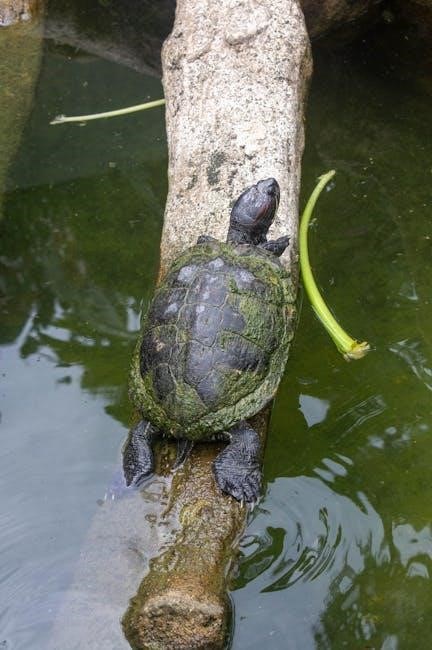Made with quality ingredients, Marie Callender’s Pie Shells offer a convenient solution for homemade pies, combining ease of use with a delicious, flaky crust texture.
Overview of Marie Callender’s Pie Shells
Made with high-quality ingredients, Marie Callender’s Pie Shells are pre-made pastry shells designed for convenience and consistency. They offer a tender, cookie-like texture with a delicious flavor. Each shell is easy to thaw and prepare, requiring minimal effort for a homemade pie. With zero trans fat and a calorie-conscious option, these shells cater to diverse dietary needs while maintaining exceptional taste. Perfect for both novice and experienced bakers, they simplify the pie-making process without compromising quality.
Importance of Proper Baking Techniques
Proper baking techniques ensure Marie Callender’s Pie Shells achieve the perfect texture and appearance. Thawing and pricking the crust prevent shrinking and air bubbles. Baking at the right temperature and time avoids under-cooking or over-browning. These steps ensure a flaky, golden crust that complements any filling. Neglecting these techniques can lead to a dense or burnt crust, compromising the overall quality of the pie.
Essential Preparation Steps
Thaw the pie shell, prick the bottom and sides to prevent air bubbles, then bake on a baking sheet in the center of the oven for 12-15 minutes, ensuring a perfectly baked crust.
Thawing the Pie Shell
Thawing the pie shell is a crucial step for achieving the perfect texture. Allow the shell to thaw at room temperature for about 10 minutes. Gently remove it from the package and place it on a lightly floured surface or a baking sheet. Prick the bottom and sides thoroughly with a fork to prevent air bubbles from forming during baking. This ensures even cooking and a flaky crust. Handle the shell gently to maintain its shape and structure.
Pricking the Bottom and Sides
Pricking the bottom and sides of the pie shell is essential to prevent air bubbles from forming during baking. Use a fork to create small, evenly spaced holes across the entire surface. This step ensures the crust cooks evenly and prevents it from shrinking or puffing up excessively. After pricking, the shell is ready for baking or pre-baking, depending on your recipe requirements. Handle the shell gently to avoid stretching or tearing the dough.
Baking Instructions
Preheat your oven to 400°F (200°C). Place the pie shell on a baking sheet, prick the bottom and sides, and bake for 12-15 minutes until golden brown.
Conventional Oven Baking
Preheat your oven to 400°F (200°C). Place the pie shell on a baking sheet, prick the bottom and sides with a fork to prevent air bubbles. Bake for 12-15 minutes, or until the crust is golden brown. For a crisper texture, bake an additional 2-3 minutes. Monitor closely to avoid over-browning, ensuring a perfectly flaky and delicious crust for your favorite pie fillings.
Temperature and Time Guidelines
Preheat your oven to 400°F (200°C) for conventional baking. Bake the pie shell for 12-15 minutes, or until golden brown. For filled pies, reduce the temperature to 375°F (190°C) and adjust baking time based on filling instructions. Monitor closely to prevent over-browning. If baking from frozen, add 2-3 minutes to the baking time. Ensure the crust reaches a golden-brown finish for optimal flavor and texture.
Defrosting for Better Results
Thawing Marie Callender’s Pie Shells at room temperature for 10 minutes ensures a flaky crust and even baking. This step enhances texture and prevents shrinkage during baking.
How to Defrost the Pie Shell
To defrost Marie Callender’s Pie Shell, place it at room temperature for about 10 minutes. Gently remove the shell from the packaging and prick the bottom and sides thoroughly with a fork to prevent air bubbles. Avoid over-thawing, as this can make the dough soft and difficult to handle. Once thawed, the shell is ready for baking or pre-baking, ensuring a flaky and even texture in your final pie.
Benefits of Defrosting Before Baking
Defrosting Marie Callender’s Pie Shell ensures a flaky and tender texture, promoting even baking. It prevents the crust from shrinking or bubbling excessively during baking. Proper thawing allows the dough to relax, making it easier to handle and shape. This step also helps the crust bake uniformly, resulting in a golden-brown finish and a delicious homemade pie experience. Defrosting enhances the overall quality of the final product.
Baking from Frozen
Bake Marie Callender’s Pie Shell directly from frozen at 375°F for 12-15 minutes, ensuring a golden, flaky crust without the need for thawing beforehand.
Pros and Cons of Baking Without Thawing
Baking Marie Callender’s Pie Shell from frozen saves time and offers convenience, but it may lead to uneven baking or a less flaky crust. Some users report crust failure or over-browning when not thawed. However, it’s a practical option for quick recipes. Ensure your oven is preheated to 375°F and bake for 12-15 minutes for best results. While convenient, defrosting beforehand often yields better texture and consistency.
Tips for Achieving the Best Results
Tips for Achieving the Best Results
For a perfectly baked crust, prick the bottom and sides thoroughly with a fork to prevent air bubbles. Preheat your oven to the recommended temperature and use pie weights if pre-baking. Avoid under-baking, as this can lead to a soggy crust. Always follow package instructions for thawing and baking times. Filling the pie immediately after baking ensures the crust remains crisp. These simple steps will help you achieve a flaky, golden crust every time.
Pre-Baking the Crust
Pre-baking ensures a golden, flaky crust. Preheat your oven to 400°F, use pie weights or beans, and bake for 12-15 minutes to achieve the perfect base for your filling.
When to Pre-Bake the Crust
Pre-bake the crust when using unbaked fillings like cream or custard to ensure a fully cooked base. For baked fillings, pre-baking prevents sogginess. Always prick the bottom and sides before baking at 400°F for 12-15 minutes until lightly golden; Using pie weights or beans helps maintain shape. This step is crucial for achieving a crisp, flaky texture and a professional finish for your homemade pies.
Using Pie Weights or Beans
Place pie weights or dried beans evenly inside the crust to prevent air bubbles and maintain shape during baking. Gently press the weights into the dough, ensuring full coverage. Bake at 400°F for 12-15 minutes. Remove the weights carefully and let the crust cool slightly before filling. This method ensures a flat, even base for your pie, promoting a crisp and professional finish. It’s a simple yet effective technique for perfect results every time.
Common Mistakes to Avoid
Overworking the dough, incorrect oven temperature, and insufficient pricking can lead to uneven baking or crust issues; Avoid these errors for a perfectly baked pie shell.
Under-Baking or Over-Browning
Under-baking can result in a soggy crust, while over-browning leads to an overly dark and brittle texture. To avoid these issues, monitor the pie shell closely during baking. Ensure the oven temperature is accurate, and use foil to cover edges if browning too quickly. Bake at 375°F for 12-15 minutes or until golden. Proper timing and attention will help achieve a perfectly baked crust. Always follow package instructions for best results.
Solving Crust Issues
Common crust issues include shrinkage, cracks, or sogginess; To prevent shrinkage, ensure the shell is properly thawed and pricked. For cracks, gently press dough together before baking. To avoid sogginess, bake the crust until golden and avoid overfilling. If the crust browns too quickly, cover edges with foil. Proper thawing and baking techniques, as well as using pie weights, can help achieve a perfectly flaky and intact crust every time. Always follow package instructions for optimal results.

About Marie Callender’s Legacy
Made with quality ingredients, Marie Callender’s Pie Shells offer a convenient solution for homemade pies, combining ease of use with a delicious, flaky crust texture.
History of Marie Callender’s
Made with quality ingredients, Marie Callender’s Pie Shells offer a convenient solution for homemade pies, combining ease of use with a delicious, flaky crust texture.
Quality and Tradition
Made with quality ingredients, Marie Callender’s Pie Shells offer a convenient solution for homemade pies, combining ease of use with a delicious, flaky crust texture.

Nutritional Information
Made with quality ingredients, Marie Callender’s Pie Shells offer a convenient solution for homemade pies, combining ease of use with a delicious, flaky crust texture.
Calorie and Trans Fat Content
Made with quality ingredients, Marie Callender’s Pie Shells offer a convenient solution for homemade pies, combining ease of use with a delicious, flaky crust texture.
Serving Size and Dietary Considerations
Each box contains two 8-ounce pastry shells, providing 16 servings of 130 calories each, with 0g of trans fat. Ideal for health-conscious bakers, these shells are gluten-containing and vegetarian-friendly, catering to various dietary needs without compromising flavor or texture.

Tips for the Perfect Crust
Keep the crust cold to maintain flaky texture and handle dough gently to avoid shrinking. These steps ensure a tender, golden-brown crust every time.
Keeping the Crust Cold
Refrigerate the pie shell before baking to maintain its shape and texture. Cold dough ensures a flaky crust and prevents shrinking during baking. For best results, thaw the shell at room temperature for 10-15 minutes, then chill it in the refrigerator for 5-10 minutes before pricking and baking. This step helps the crust hold its structure and bakes evenly, delivering a golden, tender finish.
Handling the Dough Properly
Gently handle the pie shell to avoid stretching or tearing the dough. Use a fork to prick the bottom and sides thoroughly, preventing air bubbles during baking. Avoid overworking the dough, as it can become tough. Lightly press the shell into the pan, ensuring even thickness. Trim excess dough from the edges neatly. Proper handling ensures a smooth, even bake and a flaky, tender crust. Refrigerate before baking to maintain shape.

Troubleshooting Baking Issues
Crust failure can occur due to incorrect thawing or oven temperature. Adjust baking time and ensure proper defrosting for consistent results. Monitor for over-browning to avoid damage.
Crust Failure During Baking
Crust failure often occurs due to over-browning or improper thawing. Ensure the oven temperature is accurate, and avoid under-baking. If the crust shrinks, it may be due to incomplete thawing or lack of pie weights. Adjust baking time and temperature as needed. Proper defrosting and pricking can prevent these issues. Monitor the crust closely during baking to achieve the perfect texture and avoid cracks or tears.
Adjusting Oven Temperature and Thawing Methods
For optimal results, adjust your oven temperature between 375°F to 400°F based on the pie type. Thawing methods vary: thaw at room temperature for 10 minutes or refrigerate overnight. Proper thawing prevents shrinking and ensures even baking. If baking from frozen, increase the temperature slightly. Use pie weights to maintain shape and avoid air bubbles. Monitor the crust to prevent over-browning and ensure a golden, flaky finish every time.
Following Marie Callender’s Pie Shell instructions ensures a perfectly baked crust every time. Proper thawing and baking techniques yield delicious, professional results. Enjoy experimenting with new recipes and savoring the tradition of quality from Marie Callender’s.
Final Tips for Success
For the best results, always thaw pie shells at room temperature and prick thoroughly to prevent air bubbles. Bake at the recommended temperature to ensure a golden, flaky crust. Handle the dough gently to avoid stretching, which can lead to uneven baking. Monitor the crust during baking to prevent over-browning. Experiment with different fillings while maintaining proper baking techniques for consistent success. Check the box for specific instructions to achieve the perfect pie every time.
Encouragement to Try New Recipes
Don’t be afraid to experiment with new fillings and toppings to create unique pie creations. Marie Callender’s Pie Shells are versatile, allowing you to craft both classic and innovative desserts. Try seasonal fruit combinations, creamy puddings, or even savory dishes for a twist. Share your creations with friends and family, and enjoy the joy of homemade baking with ease. Let your imagination shine in the kitchen!